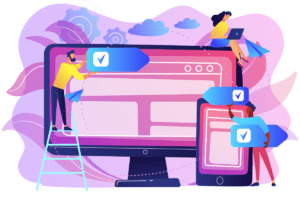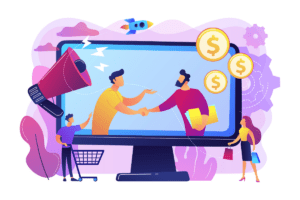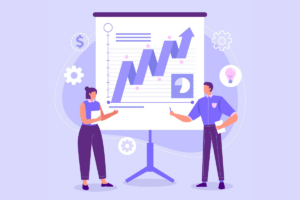As marketing professionals, we always hear, “We need to generate more leads!”. But, are you creating enough demand to then generate leads? Demand generation and lead generation are two critical strategies that often get used interchangeably. However, while they are related, they serve distinct purposes in the marketing funnel. And, can have different impacts on your business growth. In this article, we are going to go through what demand and lead generation are, and if you should prioritize one or the other. First, let’s define what demand generation is.
What is Demand Generation?
Demand generation is a marketing strategy aimed at creating awareness and interest in a company’s products or services. It focuses on building brand recognition and educating potential customers about the value of what you offer. This happens even before they are ready to make a purchase. The goal of demand generation is to nurture prospects through the buyer’s journey. From the awareness stage to the point where they are considering a purchase. Demand generation can include content marketing, webinars, podcasts, SEO, email campaigns, and other forms of marketing that reach a broad audience and provide insight.
Examples of Demand Generation
Demand generation marketing tactics aim to reach a wide audience in hopes of building trust. Here are some of the best ways to do so.
Content Marketing
Content marketing is a pretty vast term. It includes anything from blogging and SEO strategies to video marketing and eBooks, and everything in between. Content marketing involves creating and distributing this content consistently with the goal of attracting and engaging your audience. An example of content marketing could be sharing one blog article a week about relevant topics that your audience will relate to. By making this content educational, you can position your company as a trustworthy thought leader in the industry.
Webinars and Events
Webinars and virtual events are great options if you’re looking to generate leads and drive need. They allow companies to connect with potential customers in real-time, offering valuable insights and interactions with your audience. These events are often educational rather than promotional, focusing on industry trends, challenges, and solutions. Previously, we have put on webinars that go over marketing strategies for B2B companies, that briefly touches on our own company. If webinars seem daunting, take a look at this guide How to Host a Webinar and Generate Leads.
Social Media Campaigns
Social media campaigns, whether they are organic or paid, allow companies to share content, engage with followers, and build brand awareness. Unlike lead generation campaigns that focus on direct conversions, social media works to drive engagement. For example, a B2B marketing agency might use LinkedIn to share success stories, industry news, and tips on marketing best practices. By consistently providing valuable content, the agency builds a loyal following and establishes itself as a go-to resource.
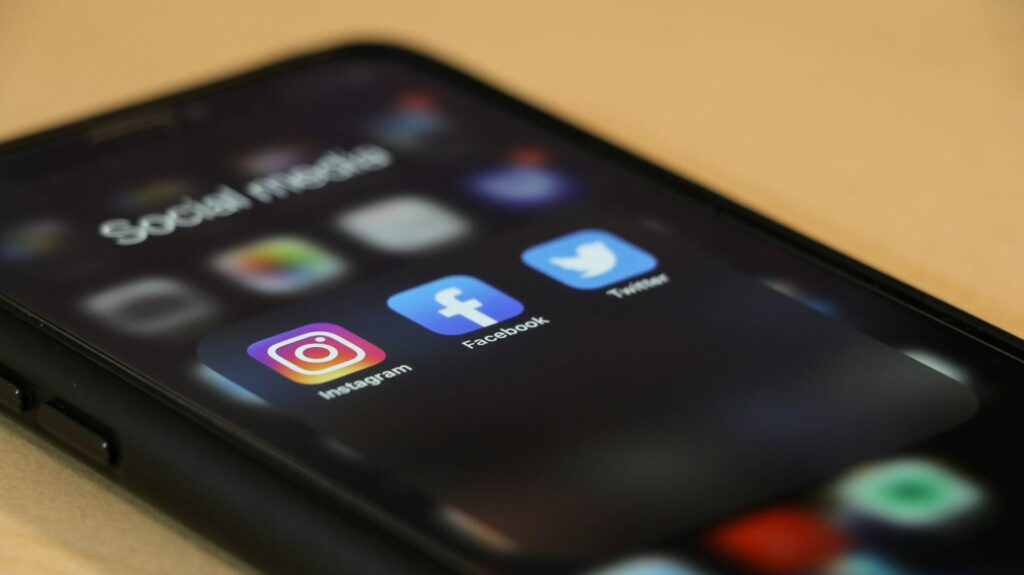
Podcasts
Podcasts are an increasingly popular way to increase demand. They offer a unique way to reach and engage with an audience through in-depth discussions, interviews, and storytelling. Podcasts allow companies to showcase their expertise and connect with listeners on a more personal level. A software company, for example, might launch a podcast series discussing the latest developments in artificial intelligence. By featuring industry experts and sharing insights, the company positions itself as a leader in AI. As a result, you can attract a broader audience interested in the topic.
Differentiating Through Thought Leadership
Another distinguishing factor in demand generation is the use of thought leadership to elevate brand perception. Thought leadership isn’t about self-promotion. It’s about presenting new perspectives, challenging assumptions, and becoming a trusted voice in your industry. While most businesses aren’t in the business of publishing proprietary market reports, you can still lead with insight. For example, if you’re a marketing automation platform, publishing an original study on “Open Rates by Industry in 2025” gives your audience data they can act on while positioning your company as an authority. High-value, high-trust content will naturally attract engagement and backlinks, both of which are SEO signals that support demand generation goals.
Timing is Everything
One often overlooked aspect of demand generation is timing. Unlike lead generation, which typically operates closer to the point of purchase, demand generation occurs much earlier in the buyer’s journey. That means you’re reaching individuals before they even realize they need your product. This is particularly crucial in industries with long sales cycles. For example, a lead generation company might publish an article on the “Top 10 Ways for B2B Companies to Generate Leads”. A sales manager might not be looking for software today, but they’ll remember the company who educated them when budget conversations begin six months later. This long-view approach creates a steady flow of qualified interest downstream.
What is Lead Generation?
On the other hand, lead generation is a more targeted marketing strategy. It focuses on capturing the interest of potential customers who have shown some level of intent to purchase. Unlike demand generation, which casts a wide net, lead generation aims to convert interested prospects into qualified leads by encouraging them to take specific actions, such as filling out a form, signing up for a newsletter, or requesting a demo. These prospects are familiar with your company, but need more nurturing to convert into a paying customer.
Examples of Lead Generation
Lead generation involves various tactics designed to capture and nurture leads. Here are some of the best ways to generate leads.
Gated Content
Gated content is a popular lead generation tactic where valuable content, such as white papers, eBooks, or webinars, is offered in exchange for contact information. This approach allows companies to identify prospects who are interested in specific topics and follow up with targeted marketing efforts. This content can be either top of funnel, or bottom of funnel, like buyer’s guides.
Free Trials, Demos, Assessments
Offering free trials, product demos, or assessments is another effective lead generation strategy. These offerings give potential customers a hands-on experience with your product or service, increasing the likelihood of conversion. Here at Visitor Queue, we offer prospects a 14-day free trial of our platform. During the trial, we offer support and highlight features that are sure to entice. This can give your prospects an idea of what they will expect and see the value before they commit.
Website Visitor Identification
Website visitor identification tools, like Visitor Queue, allow companies to track and identify visitors to their website, even if they don’t fill out a form. By analyzing visitor behavior, like acquisition, page views, and time on page, you can tailor your marketing efforts to target visitors more efficiently. Additionally, with Visitor Queue, you can access employee contact information to help you reach out to your visitors, ensuring they have received everything that they need. For example, if a company spends time viewing your pricing page, you can follow up with relevant content or offers to help them convert. Start your 14-day free trial of Visitor Queue today to start identifying your website visitors.
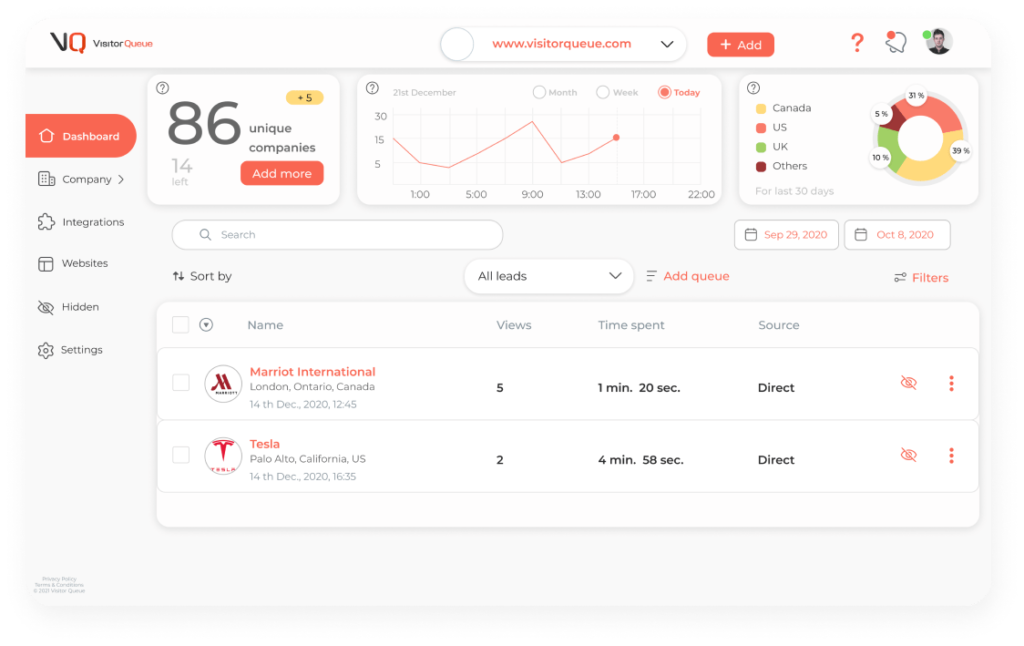
Case Studies
Case studies are a great tool for lead generation, as they provide real-world examples of how your product or service has helped other businesses. By showcasing tangible results, case studies build credibility and encourage potential customers to take the next step. This can be particularly valuable for B2B companies who have a large, complex sales funnel. Your audience should be able to relate with the problem and see a lot of value in the solution you provided for the featured client.
Email Nurture Sequences
Once a lead has entered your pipeline, it’s essential to nurture them with tailored content that speaks to their specific pain points and stage in the decision-making process. Personalized email nurture sequences are one of the most effective ways to guide leads toward conversion. For instance, if a prospect downloaded a white paper on increasing B2B website conversions, your follow-up emails should dive deeper into that topic, like offering a case study on how your platform improved conversions by 40% for a similar client, or inviting them to a product demo focused on website analytics features.
Optimizing Forms
While simple, your lead capture forms deserve attention. Many companies lose leads simply because their forms are too long, confusing, or poorly optimized for mobile. Conversion-optimized forms should be short, clearly labeled, and aligned with the perceived value of the offer. If you’re giving away a comprehensive market report, users may be willing to fill out more fields, including job title and company size. But for a quick tip sheet, an email address may suffice. Incorporating progressive profiling, where you ask for more information gradually over multiple touchpoints is another effective tactic. This reduces friction while still allowing you to build detailed lead profiles over time.
Exit-Intent Popups
Exit-intent popups are a smart, low-friction way to re-engage visitors who are about to leave your site without converting. These popups use cursor movement to detect when a user is navigating away and trigger a final message or offer. For lead generation, this could be a time-sensitive discount, a downloadable checklist, or a newsletter subscription. The key to success is relevance and timing. For example, if someone is reading your blog on B2B lead scoring, offering a gated lead scoring template as they exit can feel like a natural next step. With strategic A/B testing, exit-intent popups can improve conversion rates by 10–20% or more.
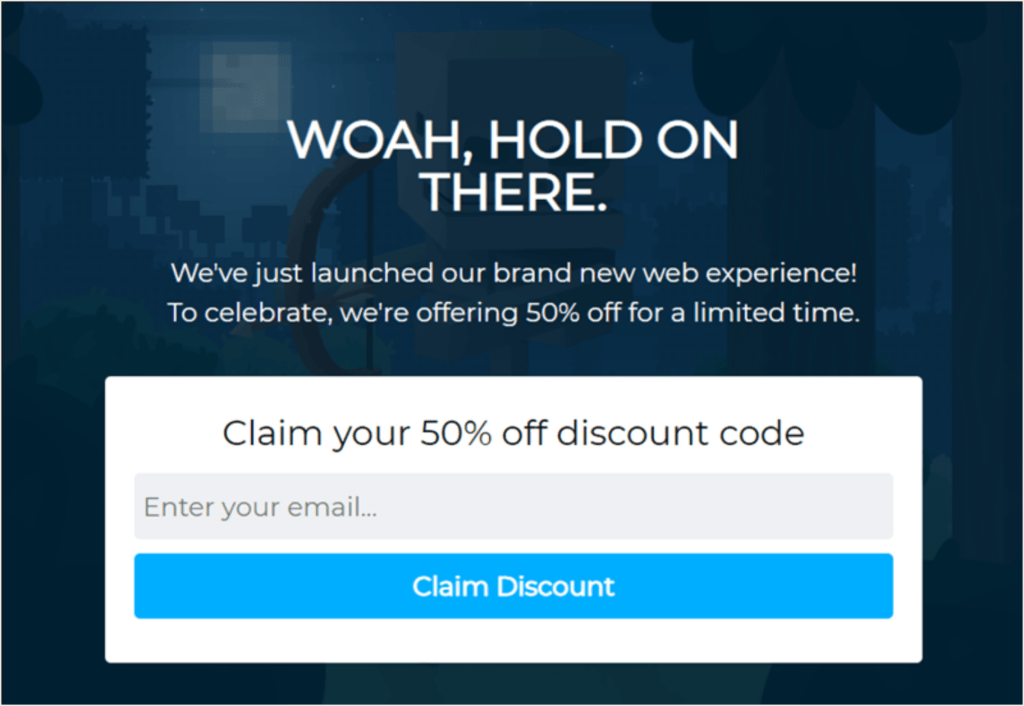
Demand Generation vs. Lead Generation: Which is Better?
While both demand generation and lead generation are essential components of a successful marketing strategy, they serve different purposes and are often used at different stages of the buyer’s journey. The best approach for your business depends on your specific goals, target audience, and where your prospects are in the sales funnel. You should use a combination of both demand generation and lead generation, ensuring that your leads have content that they resonate with depending on the stage they are at in your sales funnel.
Integrating Demand Generation and Lead Generation
Rather than viewing demand generation and lead generation as mutually exclusive, it’s often most effective to integrate the two strategies. Demand generation can create the awareness and interest needed to attract a broad audience, while lead generation captures the most interested prospects and turns them into actionable leads. For example, a well-executed demand generation campaign might drive significant traffic to your website, where visitors engage with valuable content. A portion of these visitors, having been educated and intrigued by your content, may then be converted into leads through a targeted lead generation offer, such as a free trial or downloadable resource.
Final Words
Both demand generation and lead generation are crucial for businesses looking to focus on a full funnel marketing strategy. By understanding when and how to leverage demand generation and lead generation, you can improve your marketing efforts, drive consistent growth, and achieve your business goals. As always, if you have any questions about how to use Visitor Queue to support lead generation, do not hesitate to reach out to our team.
 Identify
Identify Personalize
Personalize Benchmark
Benchmark Agencies
Agencies Integrations
Integrations Case Studies
Case Studies Use Cases
Use Cases Blog
Blog Resources
Resources

